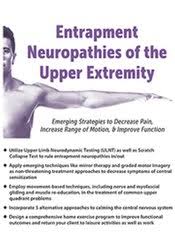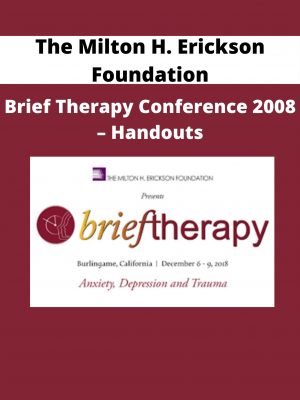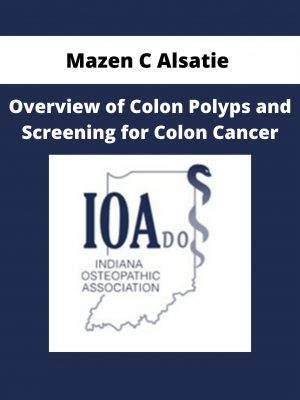Susan Stralka – Entrapment Neuropathies of the Upper Extremity
$109 Original price was: $109.$30Current price is: $30.
Shopping Instructions:
- DISCOUNT 15% : SHOP15
- Product Delivery: Within 1 – 12 hours after purchase.
It is often difficult to identify all structures causing upper extremity pain and dysfunction. Therapists must determine the source of the problem to provide the most effective treatment for the client.
Susan Stralka – Entrapment Neuropathies of the Upper Extremity
ANATOMY AND PHYSIOLOGY
- The relationship of neurovascular and musculoskeletal problems—joints, ligaments, bone, muscle, and nerve
- Movement in the nervous system
DIFFERENTIAL DIAGNOSIS OF THE UPPER QUADRANT—NECK, SHOULDER, WRIST, AND HAND
- Degenerative cervical dysfunction
- Symptom identification
- Proximal vs. distal symptoms
- Cervical radiculopathy
- Shoulder pathology
- Tenosynovitis
UNDERSTANDING OF CONNECTIVE TISSUE, NEURAL RELATIONSHIP, AND MUSCLE IMBALANCE
- Pathophysiology of neural tissue
- Consequences of muscle imbalance
IDENTIFICATION OF NERVE COMPRESSION SITES
- Upper Limb Neurodynamics Testing (ULNT) and Scratch Collapse Test
- Classification of nerve compression injuries
DEMONSTRATION AND LAB—UPPER LIMB TENSION TESTING (ULTT)
TREATMENT STRATEGIES:
MOVEMENT-BASED MANAGEMENT
- Nerve gliding
- Muscle re-education
- Mirror Therapy and Graded Motor Imagery
- Ergonomic strategies
HOME EXERCISE PROGRAM
Would you like to receive Susan Stralka – Entrapment Neuropathies of the Upper Extremity ?
Description:
Diagnosis and Treatment of Upper Extremity Neuropathies
It is often difficult to identify all structures causing upper extremity pain and dysfunction. Therapists must determine the source of the problem to provide the most effective treatment for the client. For many therapists, treating the peripheral symptoms is much easier than identifying and treating central sensitization – a condition of the nervous system that is associated with the development and maintenance of persistent symptoms. But what if there was a way to design a treatment program to assess and treat both peripheral symptoms and central sensitization?
This course provides the tools to do just that. Walk away with emerging, evidence-based assessment and treatment strategies for disorders of the upper extremity, from the cervical spine to the hand. To decipher whether entrapment neuropathies are at play, you’ll learn about and gain hands-on experience with using the Upper Limb Neurodynamic Testing (ULNT) and Scratch Collapse Test during lab. You will also gain 4 ways to identify central sensitization and 5 alternative, evidence-based approaches to calm the nervous system. Using mirror therapy, graded motor imagery, nerve and myofascial gliding, and muscle re-education, help your clients recover from debilitating pain and improve functionality as well as their quality of life.
Related products
HEALTH & MEDICAL
Dr Heidi M Crocker – Yoga Alignment | Speaker: Heidi Crocker EdD, DC
HEALTH & MEDICAL
HEALTH & MEDICAL
Bernadette Giorgi – Attitude Ballet & Pilates Fusion – Just B Method
HEALTH & MEDICAL
Gaia—Creating-High-Voltage-Health-with-Glenn-Streeter-Open-Minds












